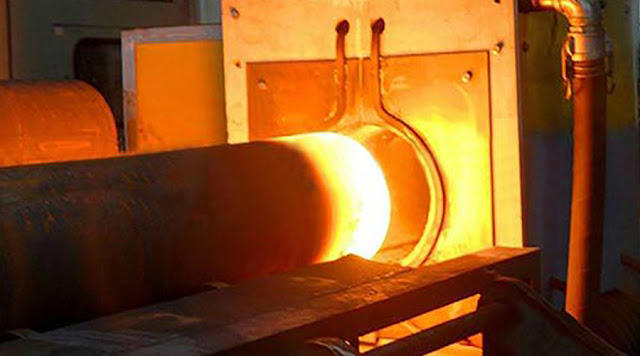Induction Furnace Construction And Working
Induction furnaces are widely used in the metallurgical industry for melting and heating various metals. They offer several advantages over other types of furnaces, such as electric arc and resistance furnaces, including greater efficiency, better temperature control, and less contamination. In this article, we will explore the induction furnace construction and working principle.
Induction Furnace Construction And Working Principle
Construction
An induction furnace consists of three main components: power supply, crucible and cooling system.
a) Power Supply: The power supply is the heart of the induction furnace.
It generates the high-frequency alternating current (AC) required for induction heating.
Power supplies are made up of various components, including transformers, inverters, and capacitors. The transformer steps up the input voltage to the required level, and the inverter converts the direct current (DC) from the power supply into high-frequency alternating current. Capacitors are used to store energy and provide stable power output.
b) Crucible: A crucible is a container for molten metal. It is usually made of refractory materials such as graphite or ceramic to withstand high temperatures. Crucibles are designed to efficiently transfer the heat generated to the metal. It has a water-cooled coil around it, called an induction coil, that induces an electromagnetic field to heat the metal.
c) Cooling System: Induction furnaces generate a large amount of heat during operation, and a proper cooling system is essential to prevent overheating. Water circulates through induction coils and other components to absorb heat. This cooling system ensures the longevity and efficiency of the induction furnace.
Working Principle Of Induction Furnaces:
The induction furnace working principle is electromagnetic induction. When alternating current flows through an induction coil, a changing magnetic field is produced. This magnetic field induces eddy currents in the metal inside the crucible.
These eddy currents generate heat due to the metal's electrical resistance, causing it to melt or heat up.
The electromagnetic field also stirs the molten metal, ensuring even temperature distribution throughout the crucible. This stirring action facilitates better alloying and removal of impurities from the molten metal.
The high-frequency alternating current used in induction furnaces allows for precise temperature control. By adjusting the power frequency and output, operators can control the rate at which metal is heated and melted. This flexibility allows induction furnaces to be used in a wide range of applications, from small foundries to large-scale industrial operations.
In summary, IF are important tools in the metallurgical industry, providing efficient and controlled melting and heating of metals. Their construction involves a power supply, crucible and cooling system, while their working principle relies on electromagnetic induction. With their numerous advantages, induction furnaces continue to play a vital role in the production of various metal products.
The above is the knowledge sharing about the induction furnace construction and working principle. If you have any questions or needs about metal smelting equipment such as electric arc furnaces, ladle furnaces, refining furnaces, submersible furnaces, continuous casting machines, etc., please feel free to contact us.
E-mail: saleswn@hanrm.com / inquiry66@hanmetallurgy.com (Daisy Zhai)
Tel / Whatsapp / Wechat: 0086 17791213533
Xi'an Hani Tech Co., Ltd.



Comments
Post a Comment